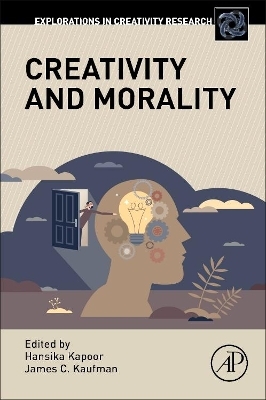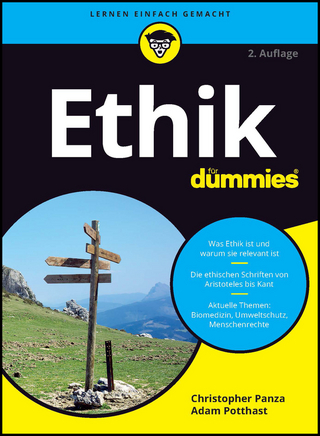
Creativity and Morality
Academic Press Inc (Verlag)
978-0-323-85667-6 (ISBN)
Hansika Kapoor, PhD, is Research Author at the Department of Psychology at Monk Prayogshala - a not-for-profit academic research institution in Mumbai, India. She holds a PhD from IIT, Bombay in the area of dark creativity; specifically, her thesis explored the measurement, facets, and process components of negative creativity through behavioral and electrophysiological methods. She is the recipient of the Fulbright-Nehru Post-Doctoral Research Fellowship (2019-2020), through which she pursued more research on dark creativity at the University of Connecticut with Prof. James C. Kaufman. She has published over 20 peer-reviewed scholarly works, several in international academic journals, such as Creativity Research Journal, Thinking Skills and Creativity, and Personality and Individual Differences. She also regularly contributes to popular media publications, including Aeon Magazine, Psychology Today, Mint, and Firstpost. Dr. Kapoor has been cited as a subject matter expert in numerous features on social and cognitive psychology in the Indian context. Her research interests lie in cognitive, social, and moral psychology. James C. Kaufman is a Professor of Educational Psychology at the University of Connecticut. He is the author/editor of more than 45 books and 300 papers, which include theoretical contributions such as the Four-C Model of Creativity (with Ron Beghetto) and empirical work, such as the study that spawned the “Sylvia Plath Effect. He is a past president of Division 10 (Society for Psychology of Aesthetics, Creativity, & the Arts) of the American Psychological Association (APA). James has won many awards, including Mensa’s research award, the Torrance Award from the National Association for Gifted Children, and APA’s Berlyne, Arnheim, and Farnsworth awards. He co-founded two major journals (Psychology of Aesthetics, Creativity, and the Arts and Psychology of Popular Media Culture). He has tested Dr. Sanjay Gupta’s creativity on CNN, appeared in the hit Australian show Redesign Your Brain, narrated the comic book documentary Independents, and is set to appear in a 2021 Netflix documentary. He wrote the book and lyrics to Discovering Magenta, which had its NYC premiere in 2015, and co-authored a book on bad baseball pitchers with his father.
SECTION I. INTRODUCTION 1. The AMORAL model of dark creativity 2. An interdisciplinary perspective on creativity and morality 3. Beyond malevolent and benevolent: Why creativity and morality have more in common than we expect 4. Morality and creativity
SECTION II. CREATIVITY, MORALITY, AND THE ARTS 5. The relation between aesthetic and moral sensitivity 6. Can you or will you imagine? Ability and willingness to imagine fictional scenarios depends on the type of imaginary world 7. Video games, morality, and empathy
SECTION III. CREATIVITY, MORALITY, AND ORGANIZATIONS/TECHNOLOGY 8. Counterproductive work behaviors and creativity 9. The relationship between creativity and (un)ethical behaviors among employees and leaders 10. Creativity and morality in the world of technology: The intersection of creativity, design, and responsible problem solving
SECTION IV. DARK INFLUENCES ON CREATIVITY AND MORALITY 11. Creativity and individual and tribal ethical behavior 12. Creativity, malevolent creativity, and the Dark Triad 13. The intersection of morality, creativity, and deception
SECTION V. CREATIVITY, MORALITY, AND THE SELF 14. The mixed moral implications of the creative identity 15. The intersections of creativity and complex moral/immoral emotions 16. Morality and creativity
| Erscheinungsdatum | 31.10.2022 |
|---|---|
| Reihe/Serie | Explorations in Creativity Research |
| Verlagsort | Oxford |
| Sprache | englisch |
| Maße | 152 x 229 mm |
| Gewicht | 450 g |
| Themenwelt | Geisteswissenschaften ► Philosophie ► Ethik |
| Geisteswissenschaften ► Psychologie ► Psychoanalyse / Tiefenpsychologie | |
| Sozialwissenschaften ► Politik / Verwaltung ► Europäische / Internationale Politik | |
| ISBN-10 | 0-323-85667-5 / 0323856675 |
| ISBN-13 | 978-0-323-85667-6 / 9780323856676 |
| Zustand | Neuware |
| Haben Sie eine Frage zum Produkt? |
aus dem Bereich


